ENGLEWOOD, Colo. — Pat Bowlen, owner of the Denver Broncos since 1984, member of the 2019 class of the Pro Football Hall of Fame and a towering figure in the National Football League, died late Thursday night at the age of 75 of complications of the Alzheimer's disease from which he suffered in recent years.
Mr. Bowlen is survived by his wife, Annabel, children Beth, Amie, John, Patrick, Brittany, Annabel and Christianna, brothers Bill and John and sister Mary Beth.
Born in Prairie du Chien, Wisconsin, on Feb. 18, 1944, Mr. Bowlen earned degrees in business and law from the University of Oklahoma before embarking on a successful career that included work in law, real estate, energy and construction.
Based out of the booming oil mecca of Edmonton, Alberta, Canada, Mr. Bowlen's diverse portfolio flourished in the 1970s and 1980s, helping provide the capital for the endeavor that would define his professional life: ownership of the Broncos.
Mr. Bowlen bought the Broncos in 1984 and immediately helped chart the club to sustained success it had never achieved before: 354 regular-season and postseason wins over the last 35 seasons, seven AFC championships, three world championships and as many Super Bowl appearances as losing seasons. The myriad accomplishments of the Broncos under his watch led to the moment that capped his stewardship of the team: the Feb. 2 announcement of his place as one of eight members of the 2019 Pro Football Hall of Fame class.
The sport's ultimate honor stands alongside his 2015 induction into the Broncos Ring of Fame and 2007 induction into the Colorado Sports Hall of Fame as accomplishments that reflect his prominent place in the history of the NFL, the Broncos and Colorado sports.
In recent years, Mr. Bowlen battled Alzheimer's disease, which forced him to step away from daily management of the team in 2014. He ceded responsibility for daily administration of the team to longtime executive Joe Ellis, with ownership of the team placed in the Pat Bowlen Trust. This arrangement will continue, with the goal of keeping the Broncos in the Bowlen family.
Remember the life of Broncos Owner Pat Bowlen through this collection of photos from moments both big and small throughout his career leading the Broncos.

Linebacker Tom Jackson, defensive back Steve Foley, owner Pat Bowlen, quarterback John Elway and other members of the Broncos make a toast with Orange Crush soda.

Owner Pat Bowlen smiles on the sidelines.

Owner Pat Bowlen holds up the Lamar Hunt (AFC Championship) Trophy after the January 11, 1987 overtime win (23-30) in Cleveland as coach Dan Reeves, the media's interviewer Ahmad Rashad and Chiefs owner Lamar Hunt look on.

Owner Pat Bowlen and general manager John Beake talk in August 1984.

Owner Pat Bowlen and running back Tony Dorsett meet with President George Bush in December 1989.
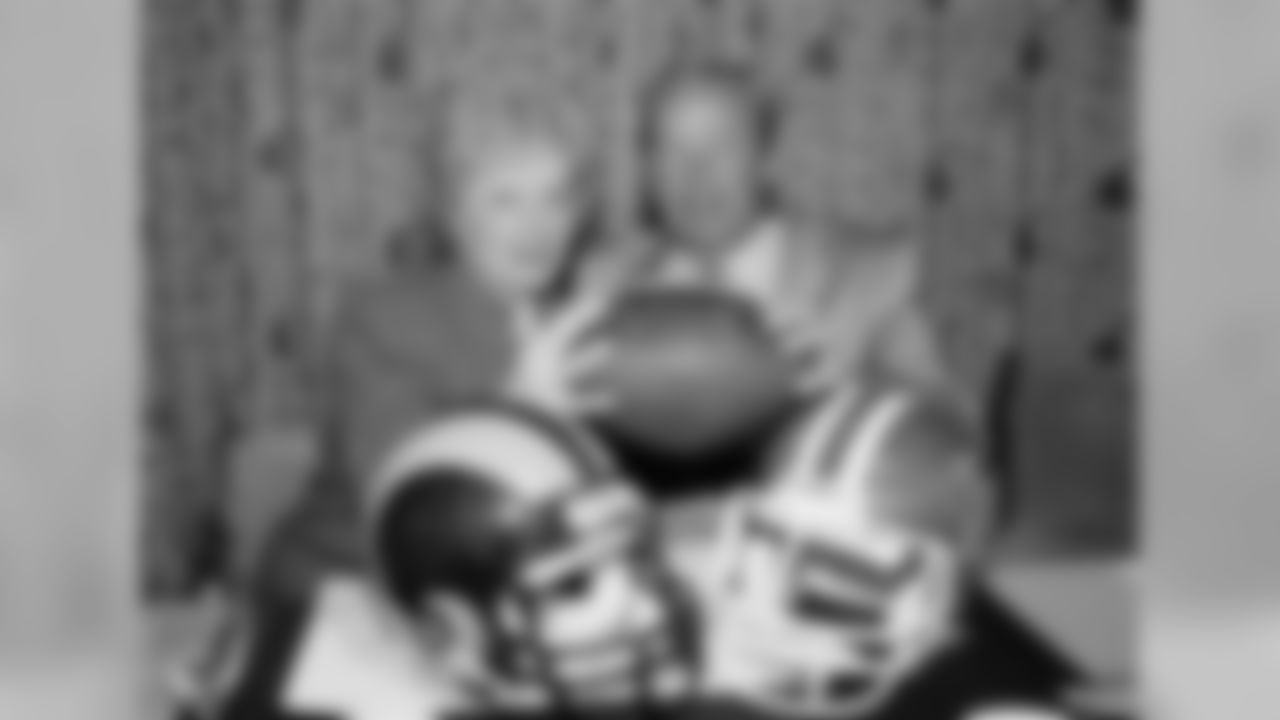
Georgia Frontiere, Los Angeles Rams owner, and Pat Bowlen, owner of the Denver Broncos, pose with a football and helmets of the Rams, left, and Broncos, right, during a meeting in London, April 23, 1987, where preparations are underway for the NFL's American Bowl 1987 game between their teams to be played at Wembley Stadium in London on August 9. (AP Photo/DeWitt)

Coach Dan Reeves and Broncos Owner Pat Bowlen talk during a November 1985 game.

Owner Pat Bowlen smiles on the sidelines.

Owner Pat Bowlen talks with center Billy Bryan on the sideline during a September 1985 game.

Owner Pat Bowlen and coach Dan Reeves watch the Broncos during a November 1986 game.

NFL Commissioner Paul Tagliabue, Nike CEO Phil Knight, quarterback John Elway and owner Pat Bowlen pose for a photo.
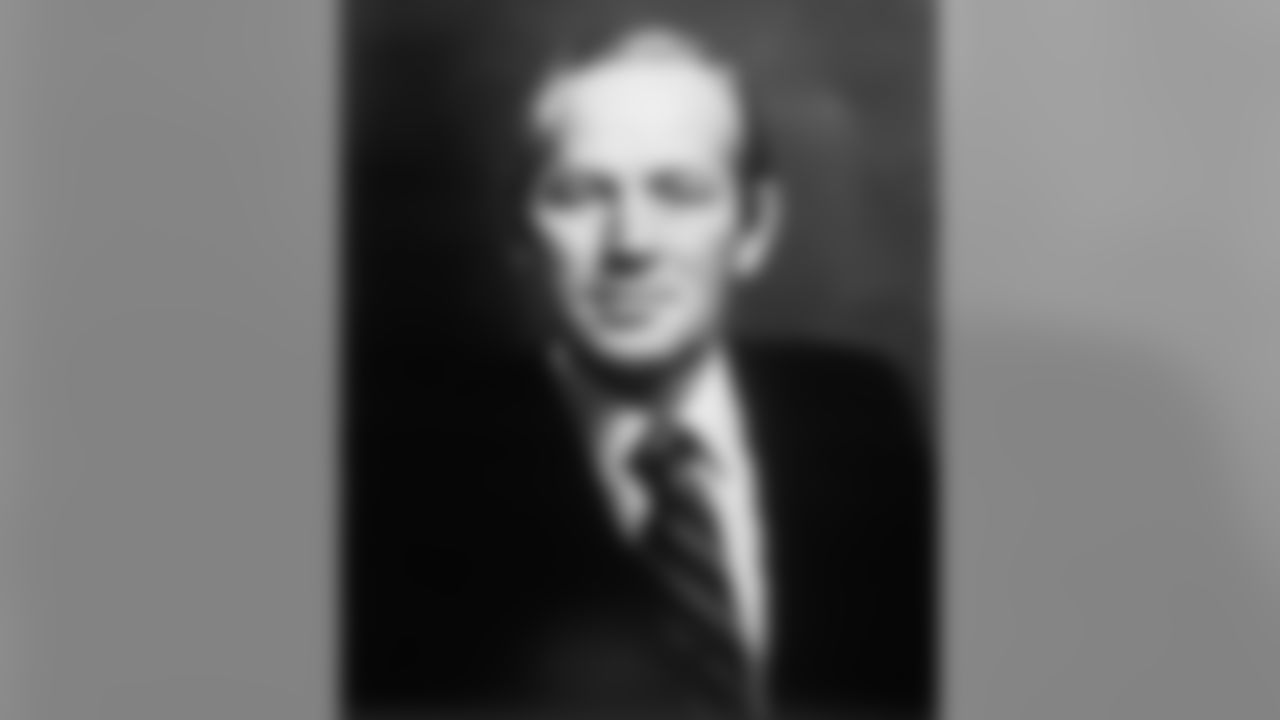
A headshot of Broncos Owner Pat Bowlen.

Denver Broncos owner Pat Bowlen shows a helmet with the team's new logo on it during a news conference at team's headquarters in Denver on Tuesday, Feb. 4, 1997, where the Broncos introduced their new logo and uniforms. (AP Photo/Ed Andrieski)

Pat Bowlen watches the pregame action from the sideline against the San Diego Chargers at Mile High Stadium in Denver, CO on December 21, 1997.

John Elway talks with Broncos Owner Pat Bowlen after a game against the Jacksonville Jaguars at Mile High Stadium in Denver, CO on December 27, 1997.
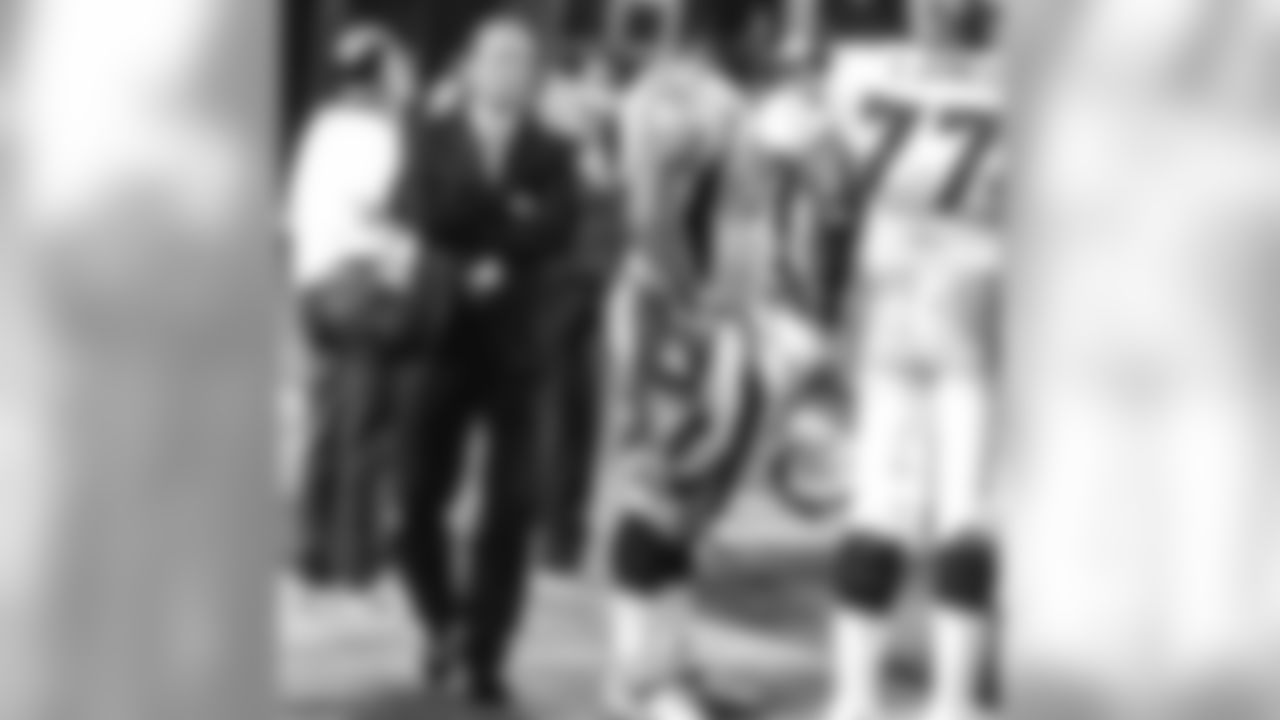
Owner Pat Bowlen walks the sidelines and talks to some players during the game against the San Diego Chargers at Jack Murphy Stadium in San Diego, CA on November 30, 1997.

NFL Commissioner Paul Tagliabue, Marco Martos and owner Pat Bowlen pose before an August 4, 1997 exhibition game against the Miami Dolphins in Mexico City.

San Diego: John Elway and owner Pat Bowlen discuss the results of the game against the San Diego Chargers at Jack Murphy Stadium in San Diego, CA on November 30, 1997.

Pittsburgh: Owner Pat Bowlen and Head Coach Mike Shanahan pose with the AFC Championship trophy after the Broncos victory against the Pittsburgh Steelers at Three Rivers Stadium in Pittsburgh, PA on January 11, 1998.

John Elway holds hands with his son Jack and Broncos Owner Pat Bowlen during the post-game meeting in the locker room against the Jacksonville Jaguars at Mile High Stadium in Denver, CO on December 27, 1997.

Atlanta: John Daly and Pat Bowlen watch the pregame action from the sideline against the Atlanta Falcons at GA Dome in Atlanta, GA on September 28, 1997.

Pat Bowlen gives head coach Mike Shanahan a congratulatory hug after the Broncos victory over the Chiefs in a second round playoff game against the Kansas City Chiefs at Arrowhead Stadium in Kansas City, MO on January 4, 1998.
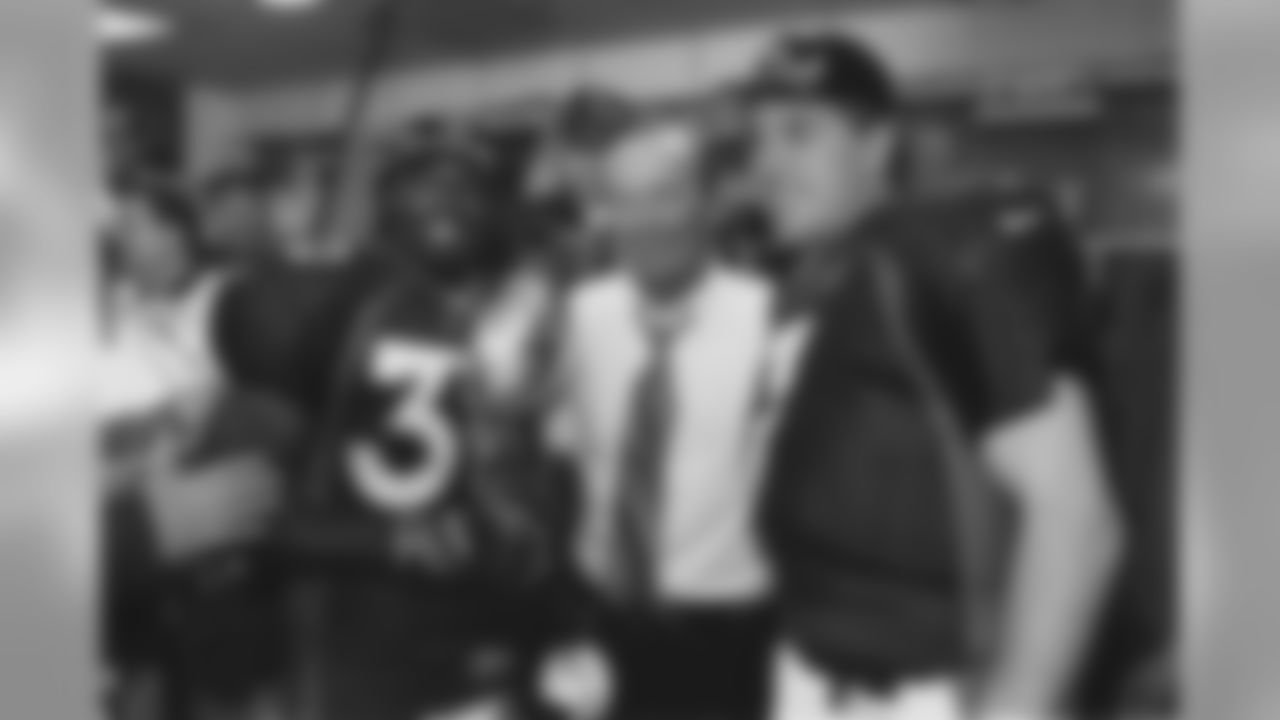
Terrell Davis, Pat Bowlen and John Elway share the glory of their Super Bowl victory against the Green Bay Packers at Qualcomm Stadium in San Diego, CA on January 25, 1998.

Owner Pat Bowlen carries off the AFC Championship trophy after the win against the Pittsburgh Steelers at Three Rivers Stadium in Pittsburgh, PA on January 11, 1998.

Owner Pat Bowlen shows off the Vince Lombardi Trophy as he enters the locker room beginning the post-game celebration. Media Relations Director Jim Saccomano is on the right against the Green Bay Packers at Qualcomm Stadium in San Diego, CA on January 25, 1998.
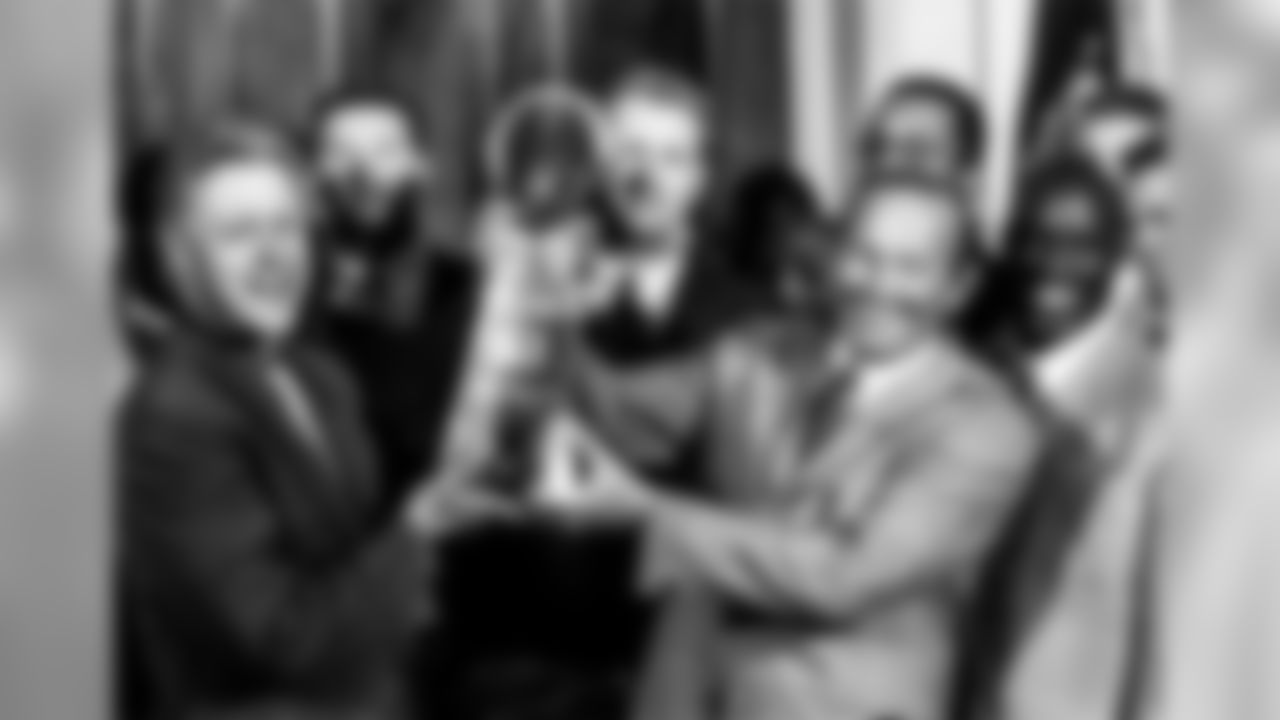
In this June 16, 1998, file photo, President Clinton, left, and Denver Broncos Owner Pat Bowlen hold the Vince Lombardi Trophy during a ceremony at the White House where the president honored the Super Bowl XXXII champions. Super Bowl Most Valuable Player Terrell Davis is at right. (AP Photo/Greg Gibson, File)

Owner Pat Bowlen hugs Media Relations Director Jim Saccomano as he enters the locker room holding the Vince Lombardi Trophy during the post-game celebration against the Green Bay Packers at Qualcomm Stadium in San Diego, CA on January 25, 1998.

General Manager John Beake and owner Pat Bowlen pose by the trophy in the locker room during the post-game celebration against the Green Bay Packers at Qualcomm Stadium in San Diego, CA on January 25, 1998.
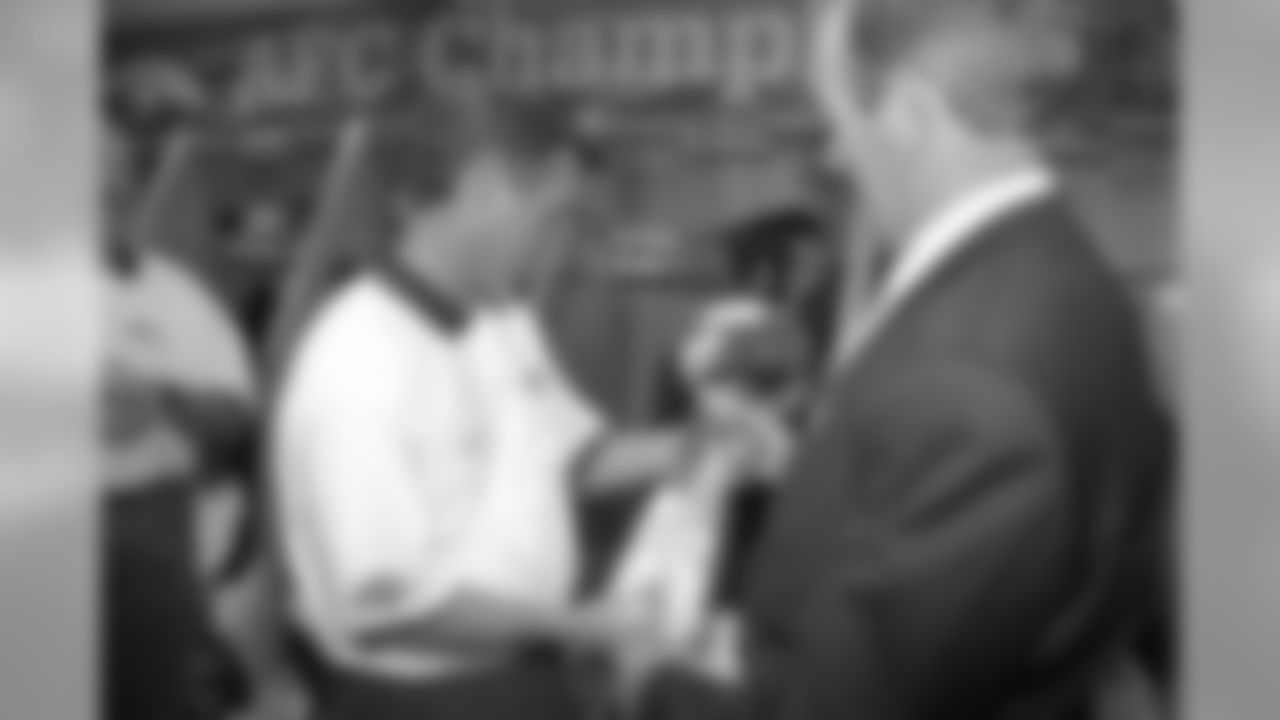
San Diego: Head Coach Mike Shanahan takes the Vince Lombardi Trophy from owner Pat Bowlen in the locker room during post-game celebrations against the Green Bay Packers at Qualcomm Stadium in San Diego, CA on January 25, 1998.

Pat Bowlen addresses the crowd while holding the Lombardi trophy during the welcome back rally at Mile High Stadium after the Super Bowl win over the Green Bay Packers at Qualcomm Stadium in San Diego, CA on January 25, 1998.

Owners Pat Bowlen (Broncos) and Jerry Jones (Cowboys) exchange greetings after the Broncos defeated the Cowboys 42-23 against the Dallas Cowboys at Mile High Stadium in Denver, CO on September 13, 1998.

Pat Bowlen, left, owner of the Denver Broncos holds the Lombardi Trophy as he talks with Fox Football analyst Terry Bradshaw at the conclusion of Super Bowl XXXIII Jan. 31, 1999, at Pro Player Stadium in Miami. The Denver Broncos defeated the Atlanta Falcons by 34–19. (Allen Kee via AP)

Pat Bowlen joins the team in prayer after the game against the San Diego Chargers at Mile High Stadium in Denver, CO on November 8, 1998.

Floyd Little, Pat Bowlen and Billy Thompson met in the locker room following the Broncos victory over the Seahawks against the Seattle Seahawks at Kingdome in Seattle, WA on October 11, 1998.

Pat Bowlen stands with Edgar Kaiser against the Miami Dolphins at Mile High Stadium in Denver, CO on September 13, 1999.

Pat Bowlen signs an autograph for a Broncos fan in Kansas City before a game against the Kansas City Chiefs at Arrowhead Stadium in Kansas City, MO on November 16, 1998.

Neil Smith and Pat Bowlen congratulate one another after the Broncos' victory against the Kansas City Chiefs at Arrowhead Stadium in Kansas City, MO on November 16, 1998.

John Elway talks with Broncos Owner Pat Bowlen (left) along the sidelines against the Oakland Raiders at Oakland-Alameda County Coliseum in Oakland, CA on September 20, 1998.

Pat Bowlen with his son, Pat Jr., in the locker room after a game against the Kansas City Chiefs at Arrowhead Stadium in Kansas City, MO on November 16, 1998.

John Elway is greeted by Pat Bowlen after the Broncos' victory over the Jets against the New York Jets at Mile High Stadium in Denver, CO on January 17, 1999.
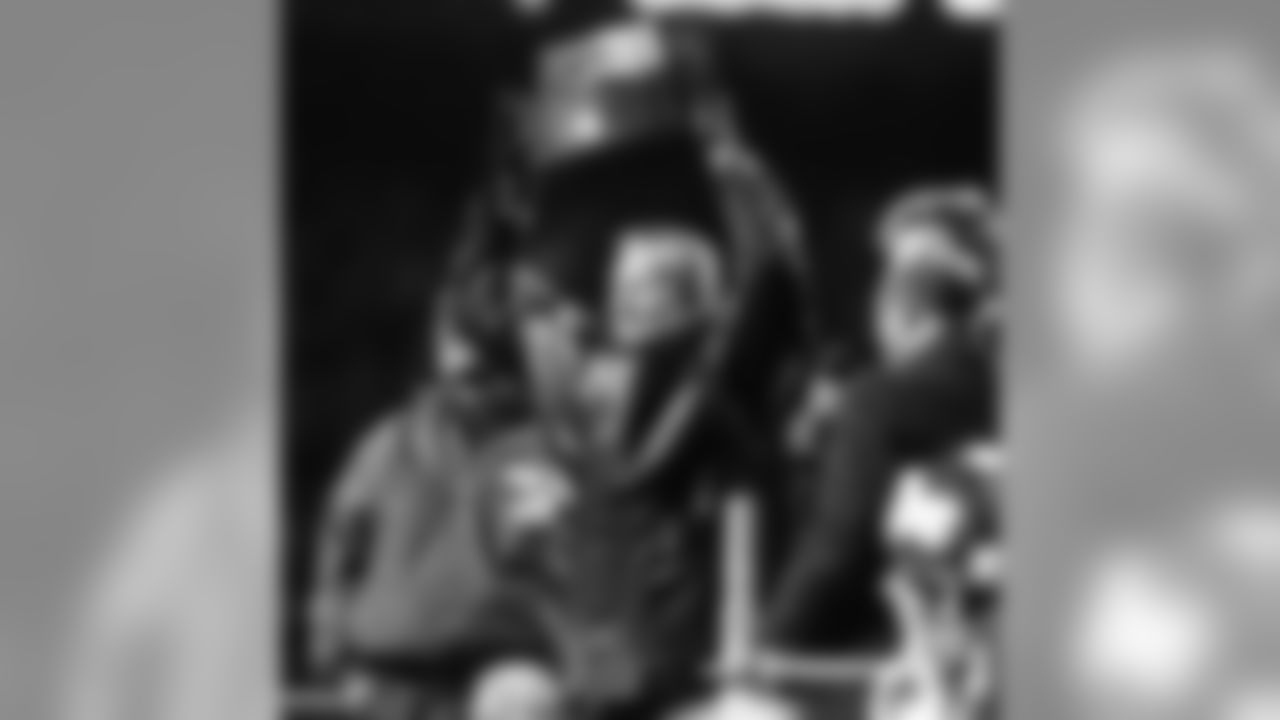
Pat Bowlen hoists another AFC Championship trophy up for the fans at Mile High to see against the New York Jets at Mile High Stadium in Denver, CO on January 17, 1999.

The Denver Broncos win the AFC title January 1998. On the victory stand: Don Shula (left to right), team president Pat Bowlen; Greg Gumbel and coach Mike Shanahan. (AP Photo / Al Messerschmidt)

Broncos Owner Pat Bowlen (right) meets with Falcons general manager Harold Richardson against the Atlanta Falcons at Pro Player Stadium in Miami, FL on January 31, 1999.

Pat Bowlen meets with friends, including future NFL Commissioner Roger Goodell, before the start of the game against the Atlanta Falcons at Pro Player Stadium in Miami, FL on January 31, 1999.

John Elway gets a hug from Pat Bowlen against the Atlanta Falcons at Pro Player Stadium in Miami, FL on January 31, 1999.

Pat Bowlen holds his second consecutive Super Bowl Trophy against the Atlanta Falcons at Pro Player Stadium in Miami, FL on January 31, 1999.

Pat Bowlen raises his fist in a victory celebration after the Broncos' win over the Atlanta Falcons at Pro Player Stadium in Miami, FL on January 31, 1999.

Pat Bowlen enters the locker room with his second consecutive Super Bowl trophy against the Atlanta Falcons at Pro Player Stadium in Miami, FL on January 31, 1999.

Denver Broncos Owner Pat Bowlen holds the Vince Lombardi Super Bowl trophy over his head and his wife, Annabel, right, waves, as they ride a fire truck through downtown Denver in a victory parade on Monday, Feb. 1, 1999. The Broncos returned to Denver Monday after winning Super Bowl XXXIII. (AP Photo/Ed Andrieski)
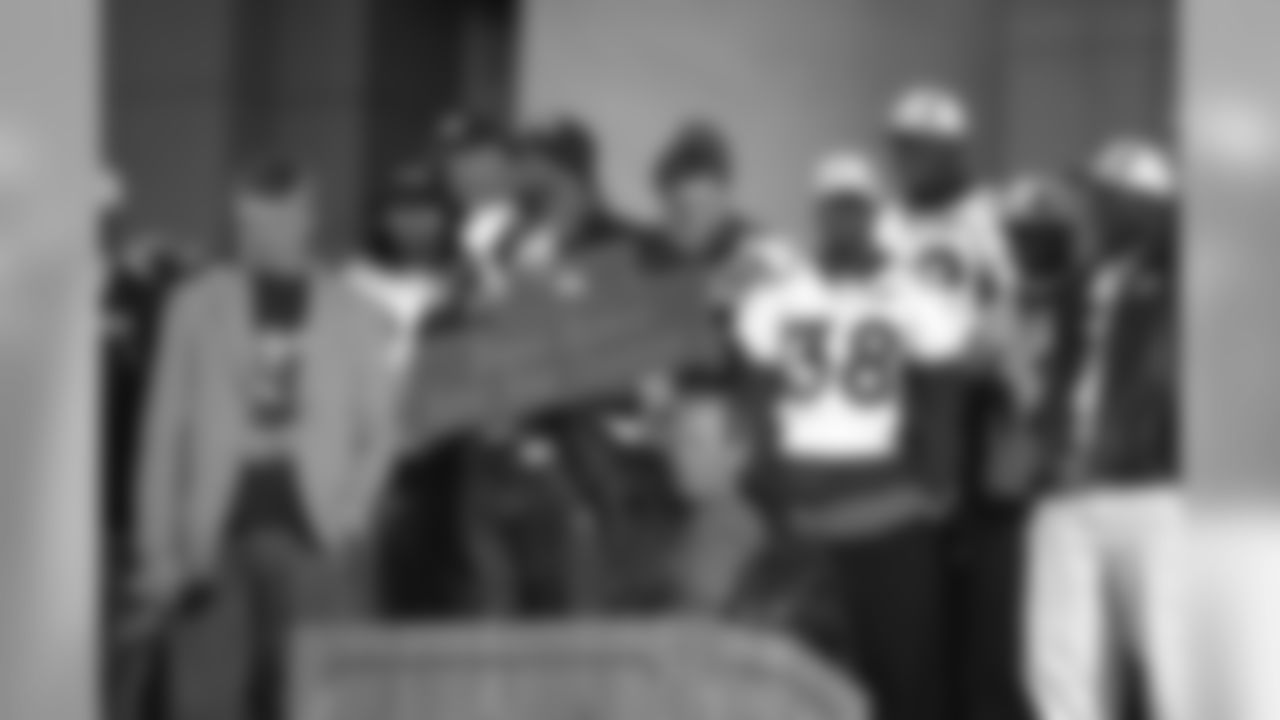
An estimated 350,000 fans turned out in downtown Denver and then on to City Hall to catch a glimpse of their back-to-back World Champion Broncos. Pat Bowlen displays his gift from Mayor Webb.
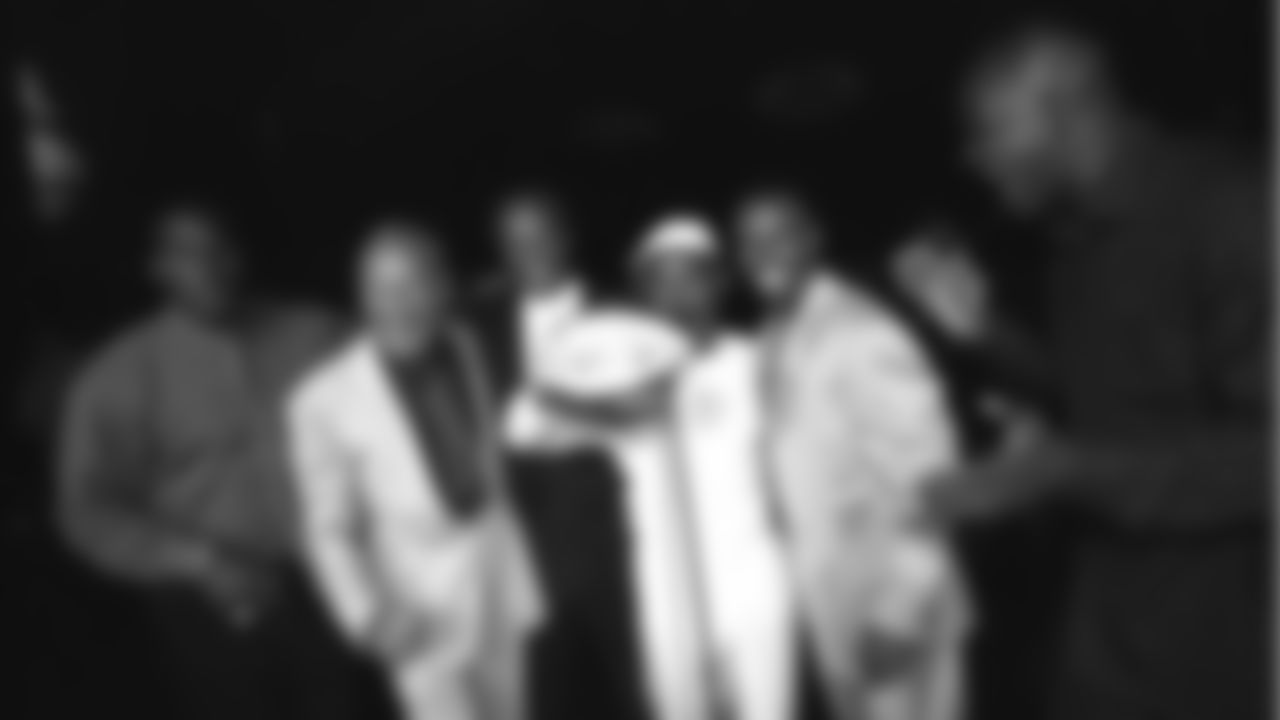
The players and coaches of the Denver Broncos were presented their second consecutive Super Bowl rings during a ceremony held at the Broadmoor Hotel in Colorado Springs. Here, Pat Bowlen stands on stage with some players who are giving him an autographed commemorative football.
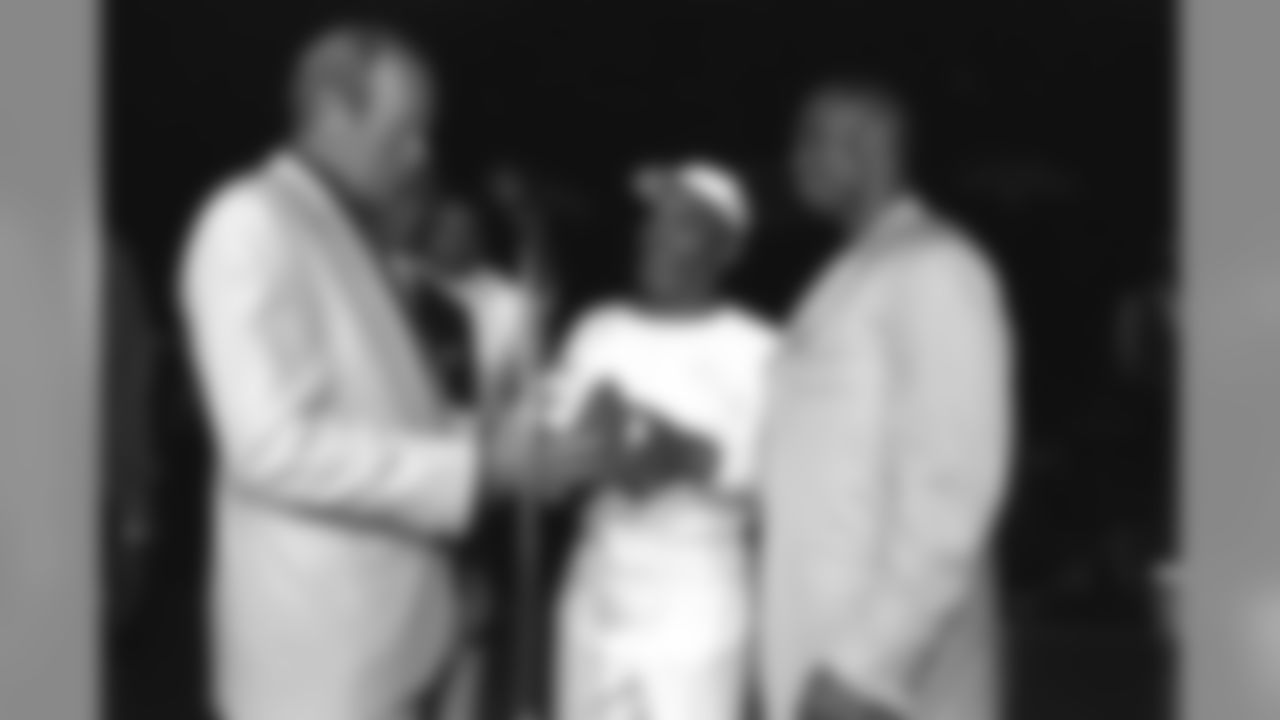
The players and coaches of the Denver Broncos were presented their second consecutive Super Bowl rings during a ceremony held at the Broadmoor Hotel in Colorado Springs. Here, team owner Pat Bowlen receives a commemorative football from Ray Crockett (right) and other players.

The players and coaches of the Denver Broncos were presented their second consecutive Super Bowl rings during a ceremony held at the Broadmoor Hotel in Colorado Springs. Here, Pat Bowlen runs down an aisle carrying a commemorative football he received from the players.

The Chinese Premier Zhu Rongji, accompanied by an extensive entourage, visits the Broncos' headquarters, meeting with Pat Bowlen, alumni players and staff during his brief stop in Denver.

The Chinese Premier Zhu Rongji, accompanied by an extensive entourage, visits the Broncos' headquarters, meeting with Pat Bowlen, alumni players and staff during his brief stop in Denver.

Owner Pat Bowlen meets with Terrell Davis' mom along the sidelines during the pre-game drills against the Kansas City Chiefs at Mile High Stadium in Denver, CO on September 24, 2000.

Pat Bowlen (right) chats with Steve Antonopolous (left) during the pregame drills against the St. Louis Rams at Invesco Field at Mile High in Denver, CO on September 8, 2002.

Denver Broncos Owner Pat Bowlen talks about running back Terrell Davis before introducing him at a news conference at the team's headquarters in Denver on Tuesday, August 20, 2002. (AP Photo/Ed Andrieski)

Owner Pat Bowlen watches his team during the pregame drills against the Oakland Raiders at Mile High Stadium in Denver, CO on November 13, 2000.

Broncos Owner Pat Bowlen hugs Shannon Sharpe during halftime ceremony.
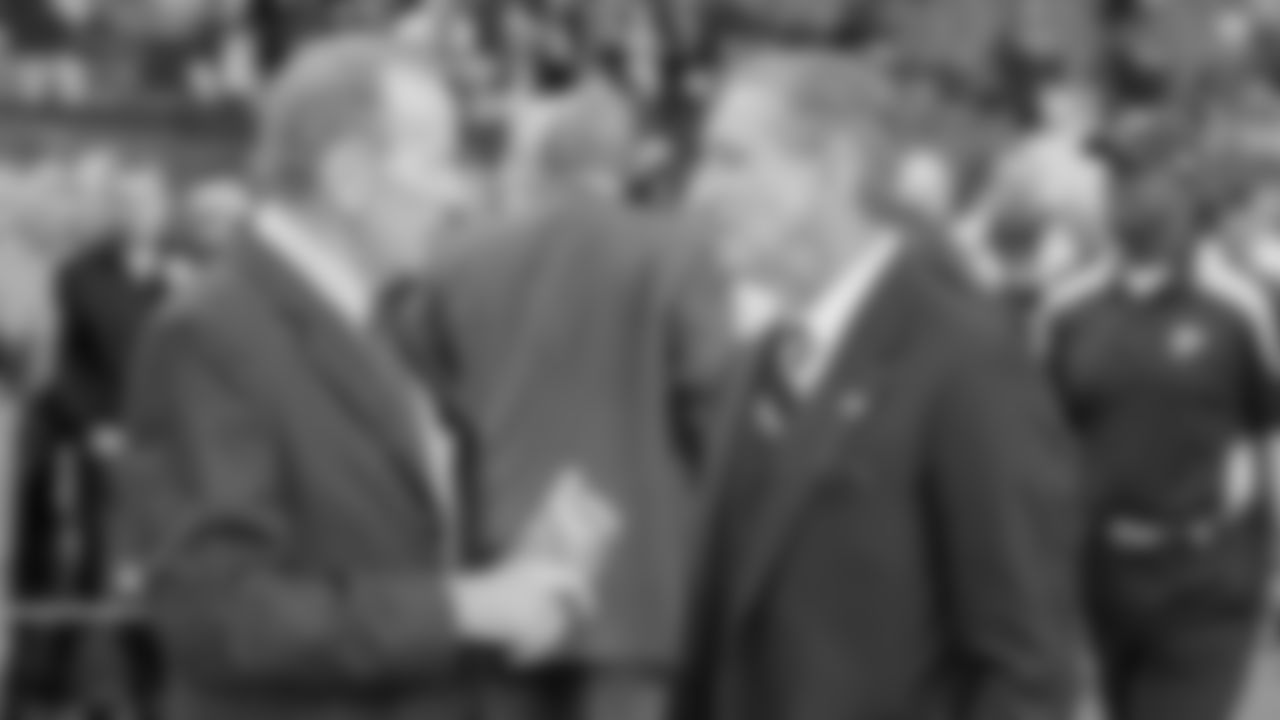
Denver Broncos President and CEO Pat Bowlen talks with Falcons Owner and CEO Arthur Blank on the sidelines before the game against the Atlanta Falcons November 16, 2008 at the Georgia Dome.

Broncos Owner Pat Bowlen meets with then-mayor of Denver, John Hickenlooper.

Former Denver Broncos offensive tackle Gary Zimmerman, left, stands next to his bronze bust with Broncos owner Pat Bowlen and former Broncos quarterback, Hall of Famer John Elway, at the Pro Football Hall of Fame on Saturday, Aug. 2, 2008 in Canton, Ohio. (AP Photo/Kiichiro Sato)
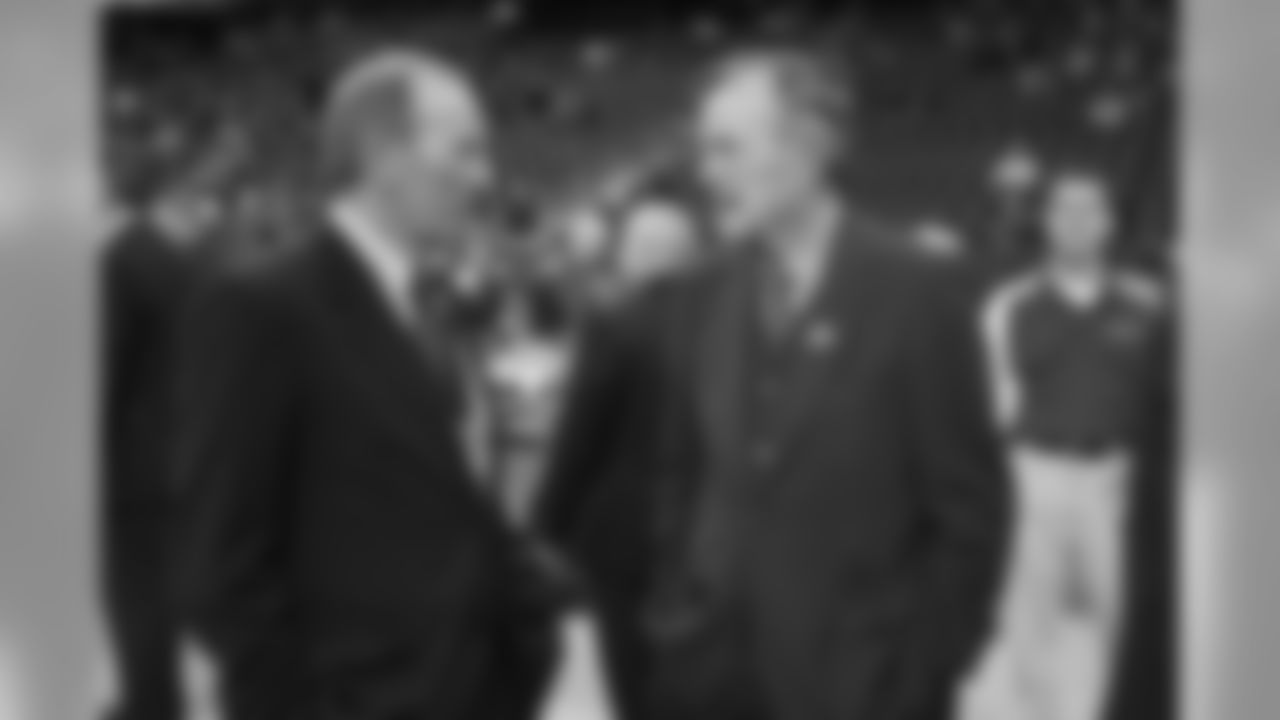
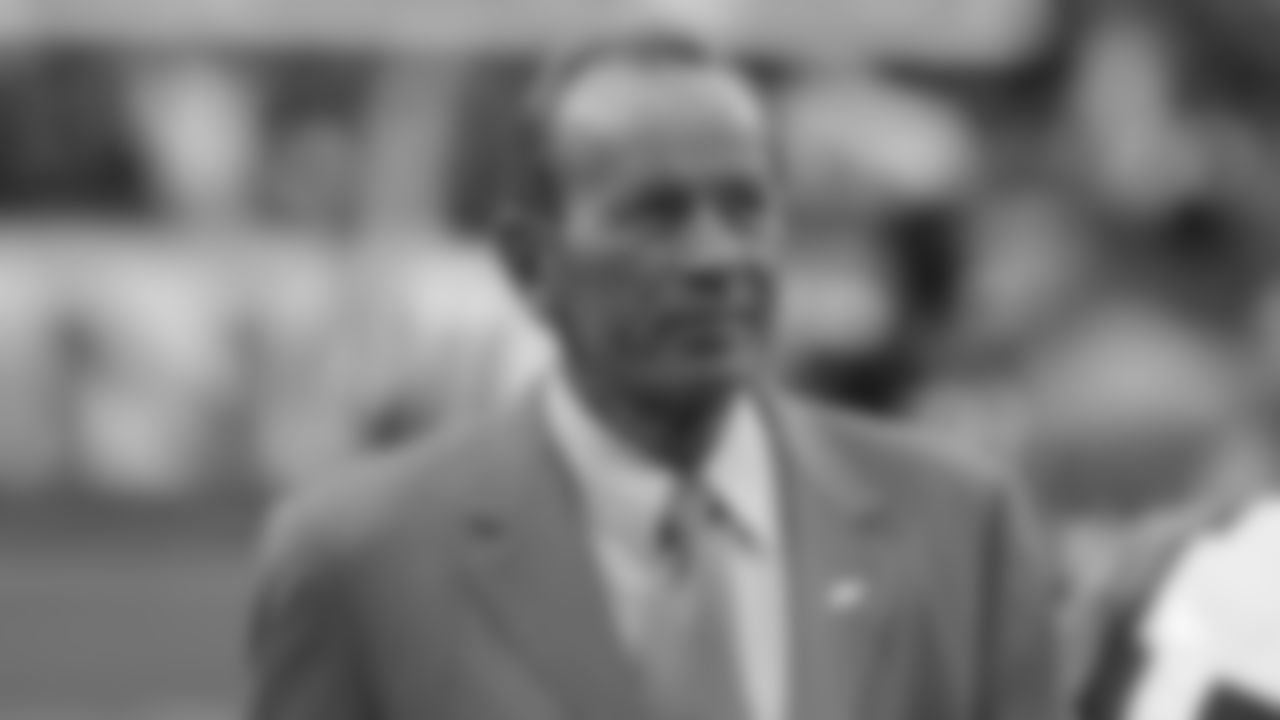
Broncos Owner Pat Bowlen walks off the field at a 2007 game.

Pat Bowlen chats with Cowboys owner Jerry Jones against the Dallas Cowboys in Irving, TX on August 11, 2001.

Denver Broncos Owner Pat Bowlen, left, welcomes Houston Texans head coach Gary Kubiak as the Texans take the field for warmup prior to Sunday night's exhibition game in Denver on Sunday, Aug. 27, 2006. Kubiak was a backup quarterback and then offensive coordinator for the Broncos for more than 20 years. (AP Photo/Ed Andrieski)

The Denver Broncos held a ceremony to commemorate the grand opening of the new Boys and Girls Club in northeast Denver. Several players were on hand, including Rod Smith, Ian Gold, and Deltha O' Neal, along with Pat Bowlen, Miles, and the Denver Broncos Cheerleaders to help with the celebration.

Broncos Owner Pat Bowlen speaks about Terrell Davis during ceremonies for Davis's induction into the Ring of Fame at Invesco Field at Mile High.

Mike Anderson is congratulated by Pat Bowlen in the locker room after setting a rookie single game rushing record against the Saints against the New Orleans Saints at Louisiana Superdome in New Orleans, LA on December 3, 2000.

Pat Bowlen greets former Bronco Steve Atwater along the sidelines against the Baltimore Ravens at PSINet Stadium in Baltimore, MD on December 31, 2000.
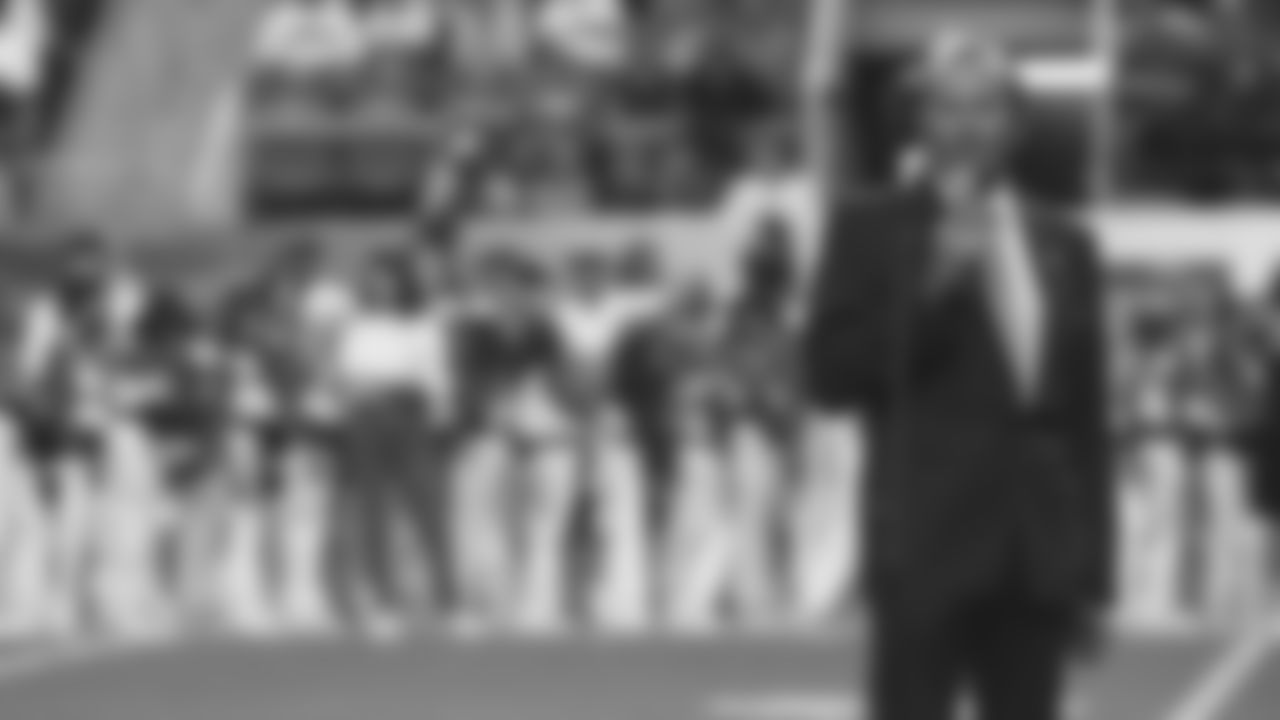
Broncos owner Pat Bowlen addresses the fans at the opening ceremony for the new Invesco Field against the New York Giants at Invesco Field at Mile High in Denver, CO on September 10, 2001.

Various season ticket holders were invited to a special ceremony to celebrate the last beam being installed in the Broncos new stadium against the San Francisco 49ers at Mile High Stadium in Denver, CO on December 23, 2000.

Broncos owner Pat Bowlen chats with Chiefs owner Lamar Hunt against the Kansas City Chiefs at Invesco Field at Mile High in Denver, CO on December 7, 2003.

Broncos Owner Pat Bowlen announces the Hall of Fame banner which will reside next to the name of Gary Zimmerman, a member of the 1998 Super Bowl team and Ring of Fame at Invesco Field October 5, 2008

Folder3
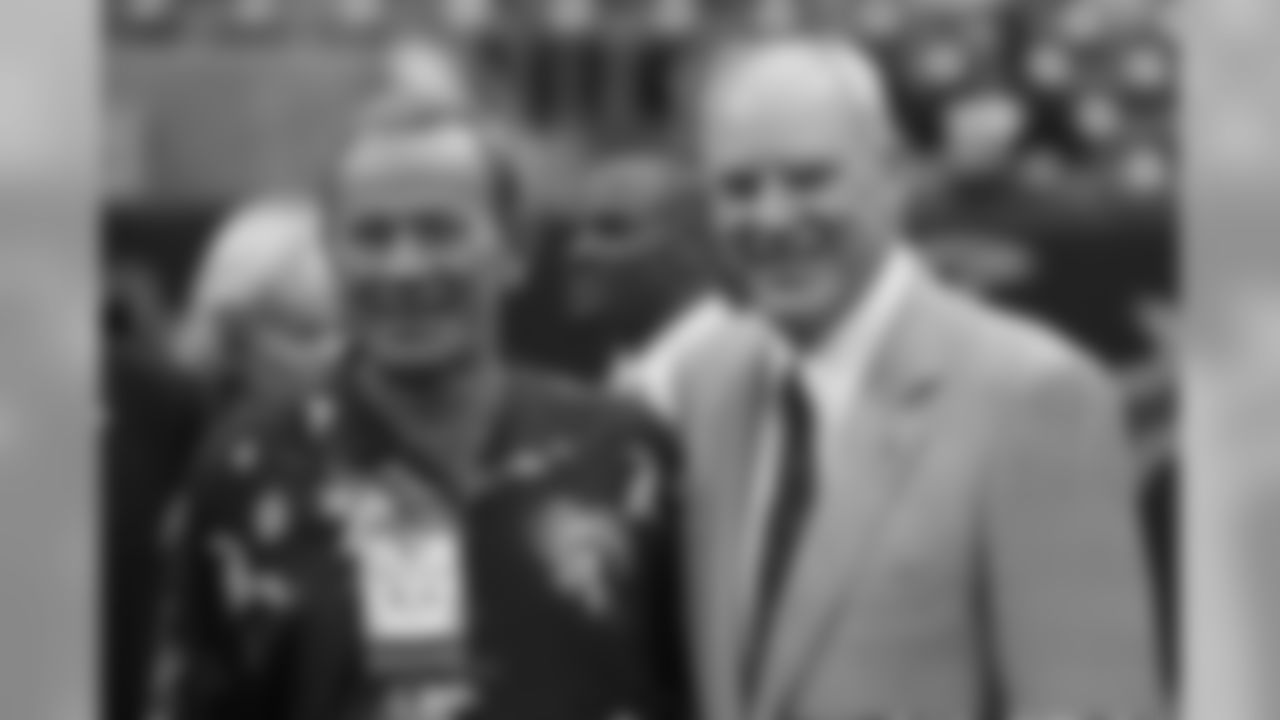
Pat Bowlen, President and Chief Executive Officer,left joins Houston Texans owner Bob McNair on the field prior to the game between the Denver Broncos and the Houston Texans at Reliant Stadium August 9, 2008

Broncos Owner Pat Bowlen watches his team warm up before a Dec. 22, 2002, game against the Oakland Raiders.

Denver Broncos Training Camp July 26, 2008

Broncos owner Pat Bowlen congratulates Deltha O'Neal on the sidelines against the Seattle Seahawks at The Kingdome in Seattle, WA on November 26, 2000.

Denver Broncos President and CEO Pat Bowlen chats with Houston Texans owner Bob McNair, right, and son Cal prior to the game at Reliant Stadium.

Broncos Owner Pat Bowlen during a 2007 game.

Terrell Davis gives thanks and a hug to Pat Bowlen at the conclusion of the ceremonies for Davis's induction into the Ring of Fame at Invesco Field at Mile High.

Broncos Owner Pat Bowlen talks with then-governor of Colorado Bill Owens at a reception at the stadium to honor the hispanic heritage in the Denver Community.
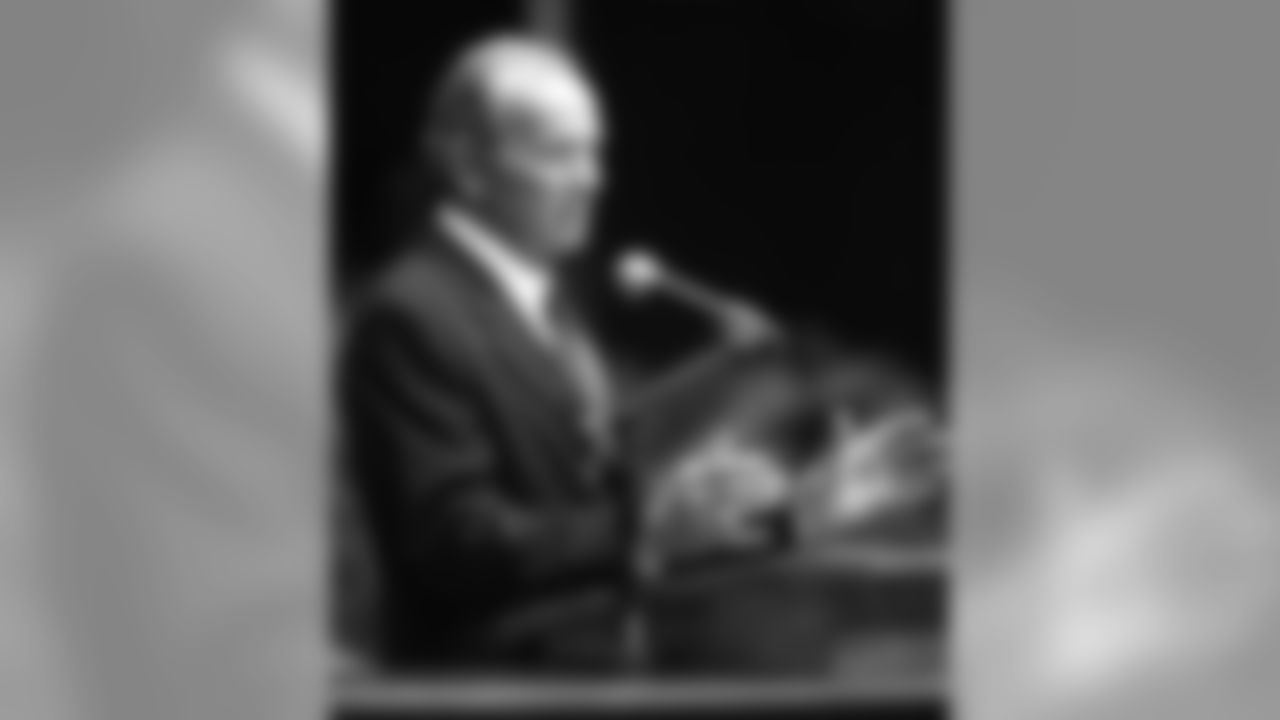
Denver Broncos owner Pat Bowlen speaks at the funeral service for cornerback Darrent Williams in Fort Worth, Texas, Saturday, Jan. 6, 2007. Williams was gunned down in a drive-by shooting in downtown Denver on New Year's Day. (AP Photo/Nathan Hunsinger, Pool)

Folder1

The Denver Broncos held a ceremony to commemorate the grand opening of the new Boys and Girls Club in northeast Denver. Several players were on hand, including Rod Smith, Ian Gold, and Deltha O' Neal, along with Pat Bowlen, Miles, and the Denver Broncos Cheerleaders to help with the celebration.

Pat Bowlen chats with a friend during the pre game drills against the San Diego Chargers at Qualcomm Stadium in San Diego, CA on December 1, 2002.

Pat Bowlen chats with Jim Fassel before the start of the game against the New York Giants at Invesco Field at Mile High in Denver, CO on September 10, 2001. Fassel previously was an offensive coordinator for the Broncos from 1993-94.

Broncos owner Pat Bowlen signs autographs prior to a game in Seattle against the Seattle Seahawks at The Kingdome in Seattle, WA on November 26, 2000.
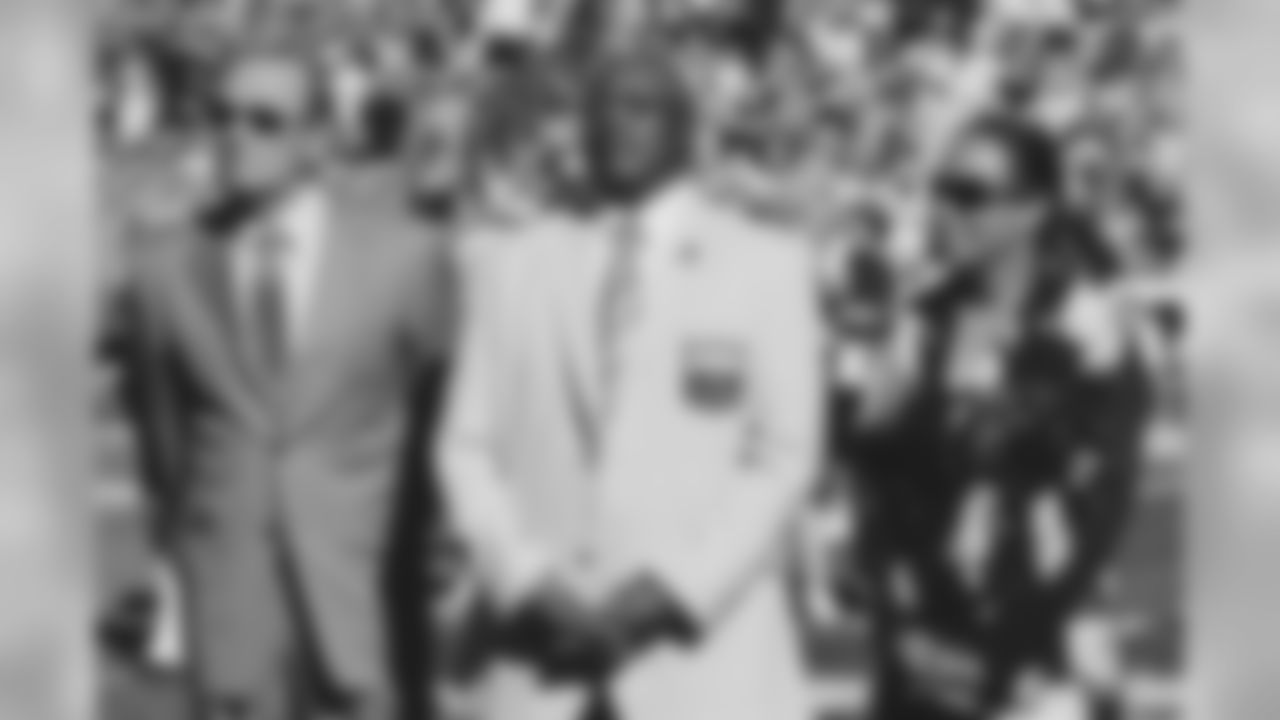
Former Denver Broncos running back Floyd Little, center, looks on with his wife and Denver Broncos Owner Pat Bowlen, left, during the halftime of an NFL football game between the Indianapolis Colts and the Denver Broncos Sunday, Sept. 26, 2010, in Denver. Little was honored for his Hall of Fame induction.(AP Photo/ Jack Dempsey )

Ian Gold is congratulated by Broncos owner Pat Bowlen on a job well done against the Oakland Raiders at Mile High Stadium in Denver, CO on November 13, 2000.

Dean Spanos, Chairman of the Board and President of the San Diego Chargers, talks with Pat Bowlen, Owner and CEO of the Denver Broncos, before action against the San Diego Chargers in an AFC divisional playoff NFL game at Sports Authority Field in Denver, CO on January 12, 2014. Photo by Gabriel Christus

Denver Broncos owner and CEO Pat Bowlen with president Joe Ellis (L) and executive vice president John Elway (R) before action against the New England Patriots in the AFC Championship playoff NFL game at Sports Authority Field in Denver, CO on January 19, 2014.

Interim Head Coach Jack Del Rio presents owner and CEO Pat Bowlen a game ball for his 300th win as an owner after Denver defeated the San Diego Chargers 28-20 in the NFL game at Qualcomm Stadium in San Diego,CA November 10, 2013.

Denver Broncos owner and CEO Pat Bowlen with his construction helmet at the site of the field house groundbreaking at the Denver Broncos Dove Valley facility November 19, 2013 in Englewood,CO.

Broncos Owner and CEO Pat Bowlen and wife Annabel prior to ceremonies where Bowlen received the Mizel Institute's 2013 Community Enrichment Award on May 22, 2013, in front of more than 2,000 guests, including Broncos Hall of Famers.

Raiders owner Al Davis and Pat Bowlen share a laugh before the start of the game against the Oakland Raiders at Mile High Stadium in Denver, CO on November 22, 1998.

First round pick Sylvester Williams is greeted by Denver Broncos owner Pat Bowlen at the Dove Valley facility April 26, 2013 in Englewood,CO.

Newly acquired free agent Louis Vasquez , right, has a conversation with Denver Broncos owner Pat Bowlen after Vasquez signed his new contract on March 14, 2013
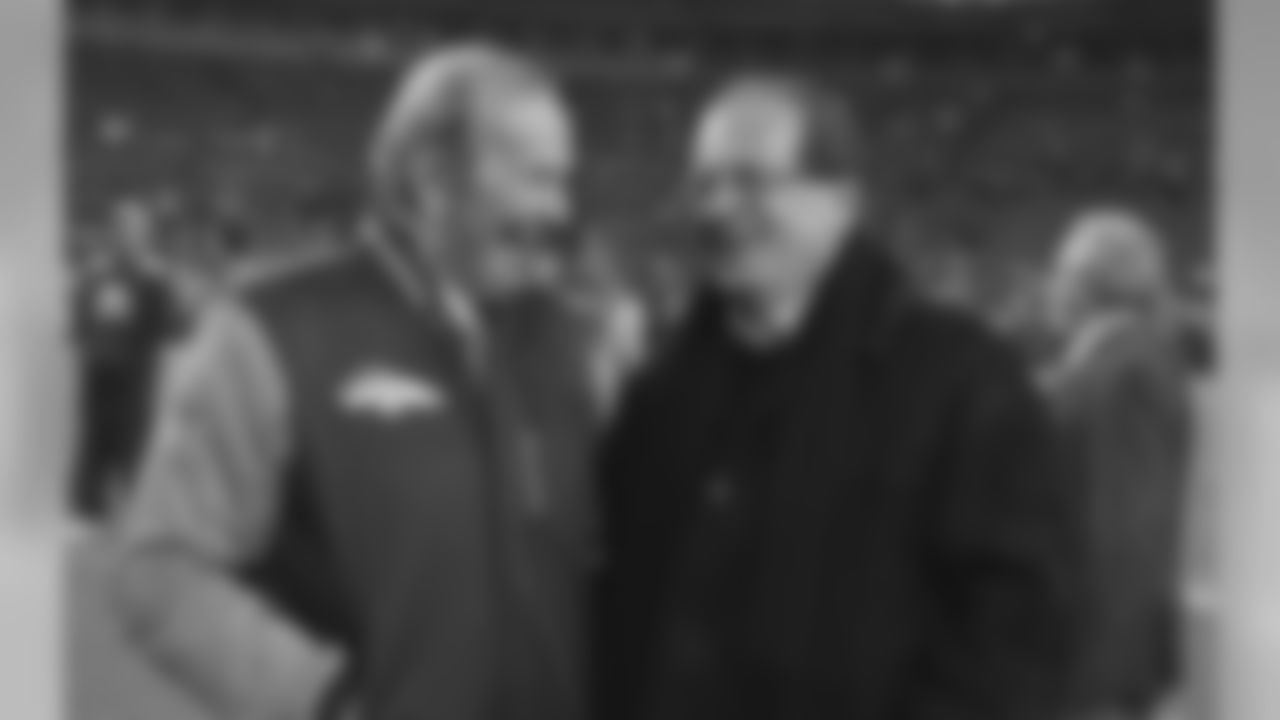
Denver Broncos owner Pat Bowlen, left, talks with San Diego Chargers owner Dean Spanos before the start of an NFL football game between their two teams, Thursday, Dec. 12, 2013, in Denver. (AP Photo/Jack Dempsey)

Denver Broncos Executive Vice President of Football Operations John Elway,left, and Owner Pat Bowlen watch drills on the sidelines prior to action against the Buffalo Bills in the NFL game August 18, 2011 at Invesco Field in Denver,CO.

Owner and CEO Pat Bowlen with former player and community development staff member Billy Thompson prior to action against the San Diego Chargers in the NFL game at Qualcomm Stadium in San Diego,CA November 10, 2013.

Denver Broncos owner and CEO Pat Bowlen meets with Philadelphia Eagles owner Jeff Laurie before the NFL game at Sports Authority Field in Denver, CO on September 29, 2013.
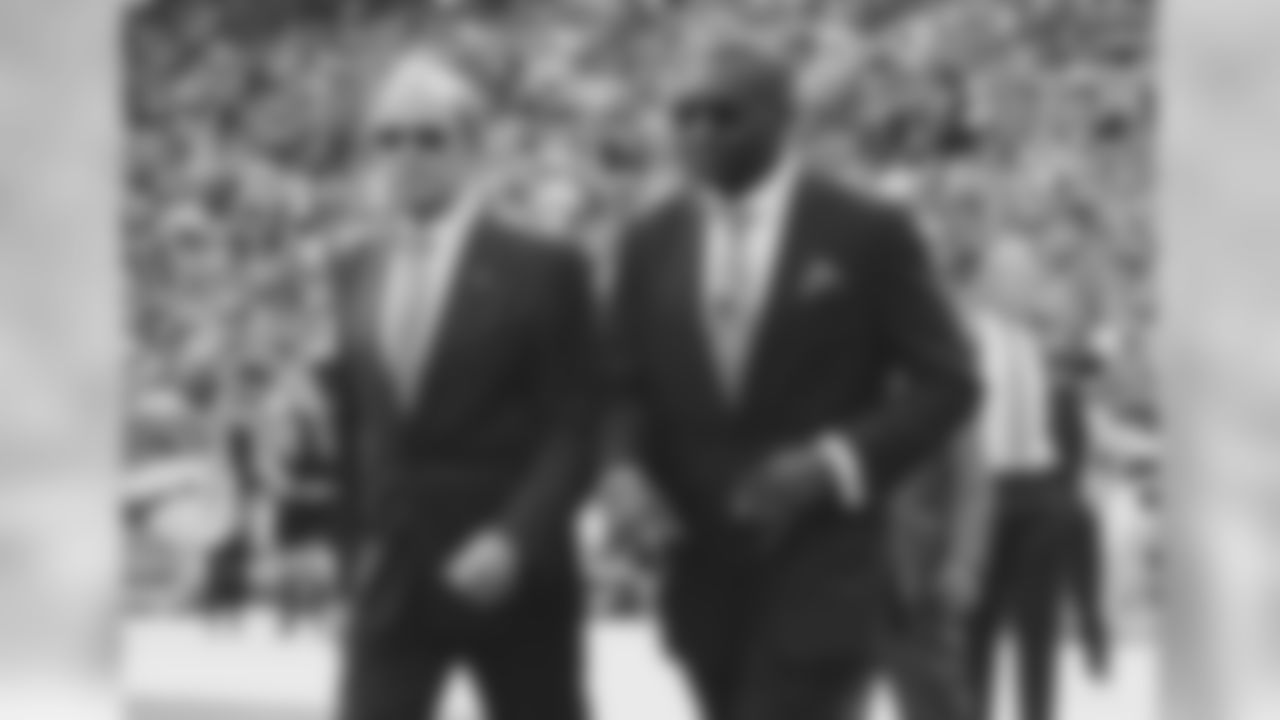
Denver Broncos Owner Pat Bowlen and former Broncos wide receiver Rod Smith walk onto the field for a Ring of Fame ceremony during an NFL football game between the Denver Broncos and the Houston Texans Sunday, Sept. 23, 2012, in Denver. (AP Photo/Jack Dempsey)

Denver Broncos owner Pat Bowlen and Washington Redskins owner Daniel Snyder before the NFL game at Sports Authority Field in Denver, CO on October 27, 2013.

Jason Elam, left, holds up a jersey with Pat Bowlen, owner of the Denver Broncos football team, in Englewood, Colo., on Wednesday, March 31, 2010. Elam kicked field goals and extra points for 17 years in the NFL, the last two years with the Atlanta Falcons. Elam retired Wednesday as a Bronco. Nearly four months after being waived by the Falcons, Elam signed a one-day contract with Denver and retired. The Broncos drafted him in the third round in 1993. (AP Photo/David Zalubowski)

Denver Broncos owner Pat Bowlen shakes former Denver Broncos Rod Smith's hand during the Ring of Fame ceremony at halftime against the Houston Texans at Sports Authority Field in Denver Colorado on September 23, 2012. (Photo credit: Gabriel Christus/Denver Broncos)

Denver Broncos Owner and CEO Pat Bowlen, left and Executive Vice President of Football Operations John Elway on the sidelines before the NFL game between the Denver Broncos and the San Francisco 49er's at Candlestick Park in San Francisco August 8, 2013.

Denver Broncos President and CEO Pat Bowlen greets 2010 first-round pick Demaryius Thomas on his arrival at Dove Valley headquarters in Englewood,CO April 23, 2010. (AP Photo/Eric Bakke)

Head Coach John Fox and Owner and CEO Pat Bowlen have a good laugh at Denver Broncos training camp August 17, 2011.

Broncos Owner Pat Bowlen greets 2011 first-round pick Von Miller prior to Miller's press conference at the Denver Broncos Dove Valley facility in Englewood,CO April 29, 2011.

New Broncos quarterback Peyton Manning, center, signs his contract with team owner Pat Bowlen in attendance at the team's headquarters in Englewood, Colo., on Tuesday, March 20, 2012.

New Broncos quarterback Peyton Manning, left, gets a congratulatory hug from team owner Pat Bowlen after signing his contract at the team's headquarters in Englewood, Colo., on Tuesday, March 20, 2012.

Denver Broncos owner Pat Bowlen,right, shakes Peyton Manning's hand after introducing Peyton Manning as the team's newsl quarterback at a news conference at the team's headquarters in Englewood, Colo., on Tuesday, March 20, 2012.

Draft pick Tim Tebow is greeted by President and CEO Pat Bowlen after Tebow arrives at Dove Valley headquarters in Englewood,CO April 23, 2010.
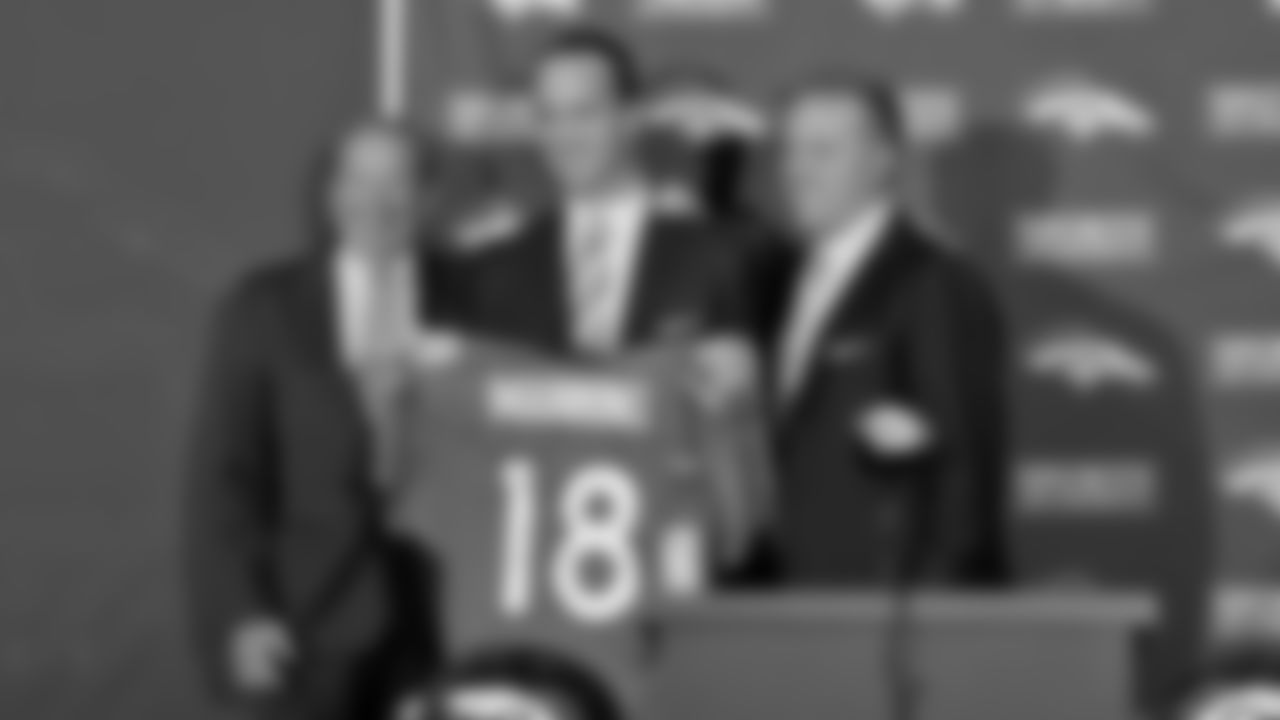
Denver Broncos owner Pat Bowlen,left, and Executive Vice President of Football Operations John Elway,right, pose with Peyton Manning as he shows off his newsl jersey during a press conference at the Dove Valley facility March 20, 2012.

Denver Broncos quarterback Peyton Manning, right, listens along with team owner Pat Bowlen, center, and Head Coach John Fox, left, to remarks by Executive Vice President of Football Operations John Elway during a news conference March 20, 2012.

Denver Broncos CEO Pat Bowlen ,right, shakes the hand of John Elway after introducing him to the media as his newly appointed Executive Vice President of Football operations at the Dove Valley Complex in Englewood,CO. January 5, 2011

Denver Broncos new Head Coach John Fox, right enjoys a laugh with Executive Vice President of Football Operations John Elway, left, and CEO Pat Bowlen during Fox's press conference January 14, 2011 being introduced to the media at Dove Valley headquarters in Englewood,CO.

Newly acquired free agent Wes Welker is greeted by Denver Broncos owner Pat Bowlen after he arrived at the Denver Broncos Dove Valley facility March 14, 2013.
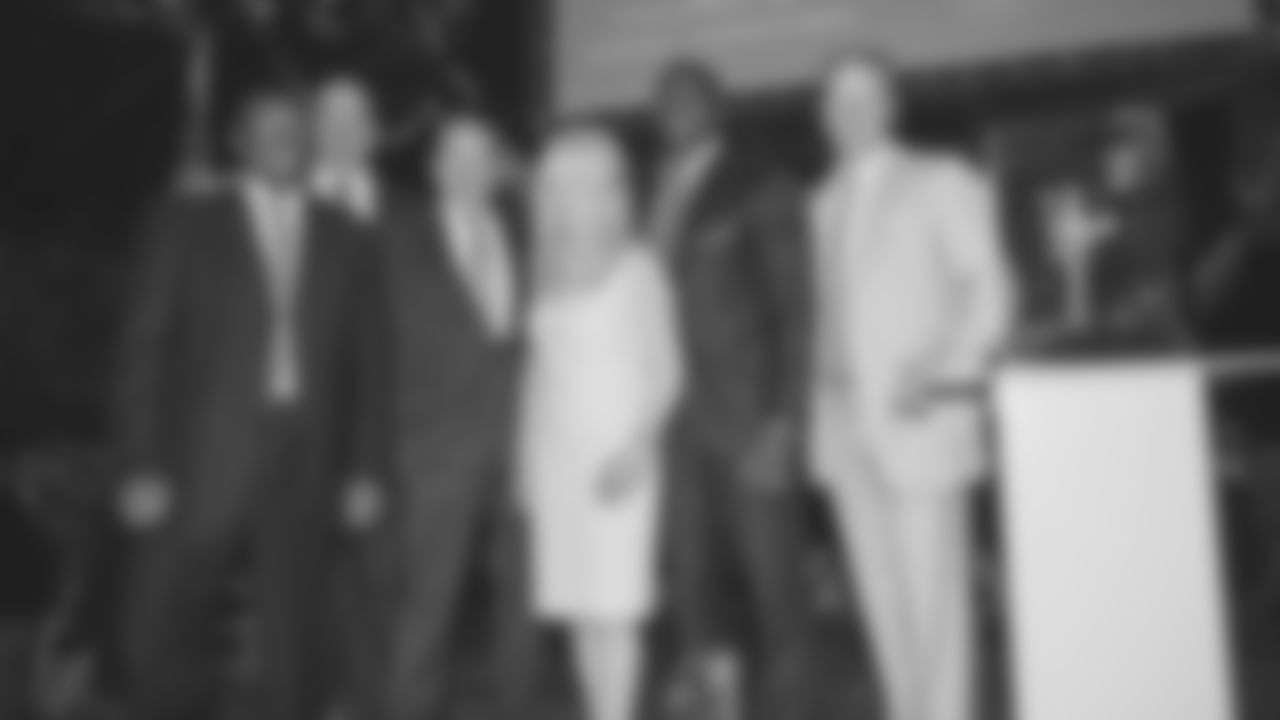
Broncos Owner and CEO Pat Bowlen surrounded by wife Annabel and former Broncos Floyd Little,Gary Zimmerman, Shannon Sharpe and John Elway after Bowlen received the Mizel Institute's 2013 Community Enrichment Award on May 22, 2013.

Denver Broncos Owner Pat Bowlen prior to an NFL football game against the Seattle Seahawks Sunday, Sept. 19, 2010, in Denver. (AP Photo/Jack Dempsey)

Denver Broncos Owner and CEO Pat Bowlen acknowledges the crowd celebrating his 300th win as an owner prior to action against the Kansas City Chiefs in the NFL game at Sports Authority Field in Denver, CO on November 17, 2013.

Denver Broncos Owner and CEO Pat Bowlen acknowledges the crowd celebrating his 300th win as an owner prior to action against the Kansas City Chiefs in the NFL game at Sports Authority Field in Denver, CO on November 17, 2013.

Denver Broncos owner and CEO Pat Bowlen with New England Patriots owner Robert Kraft before the AFC Championship playoff NFL game at Sports Authority Field in Denver, CO on January 19, 2014.

Denver Broncos quarterback Peyton Manning (18) shakes hands with Owner and CEO Pat Bowlen after action against the New England Patriots in the AFC Championship playoff NFL game at Sports Authority Field in Denver, CO on January 19, 2014.

John Elway holds up the Lamar Hunt Trophy and Denver Broncos owner Pat Bowlen talks with CBS broadcaster Jim Nantz after the AFC Championship playoff game against the New England Patriots on Sunday, Jan. 19, 2014 in Denver. The Broncos won the game, 26-16. (AP Photo/Ric Tapia)

Owner Pat Bowlen holds the Lamar Hunt ARC Championship Trophy and salutes fans after Denver defeated the New England Patriots in the AFC Championship playoff NFL game at Sports Authority Field in Denver, CO on January 19, 2014.

Denver Broncos practice at the New York Jets facility Florham Park NJ January 27, 2014.

Denver Broncos owner and CEO Pat Bowlen greets Seattle Seahawks owner Paul Allen before Super Bowl XLVIII at MetLife Stadium in East Rutherford, NJ February 2, 2014.

Denver Broncos quarterback Peyton Manning talks with CEO & Owner Pat Bowlen during the team photo at Dove Valley headquarters on October 4, 2014.
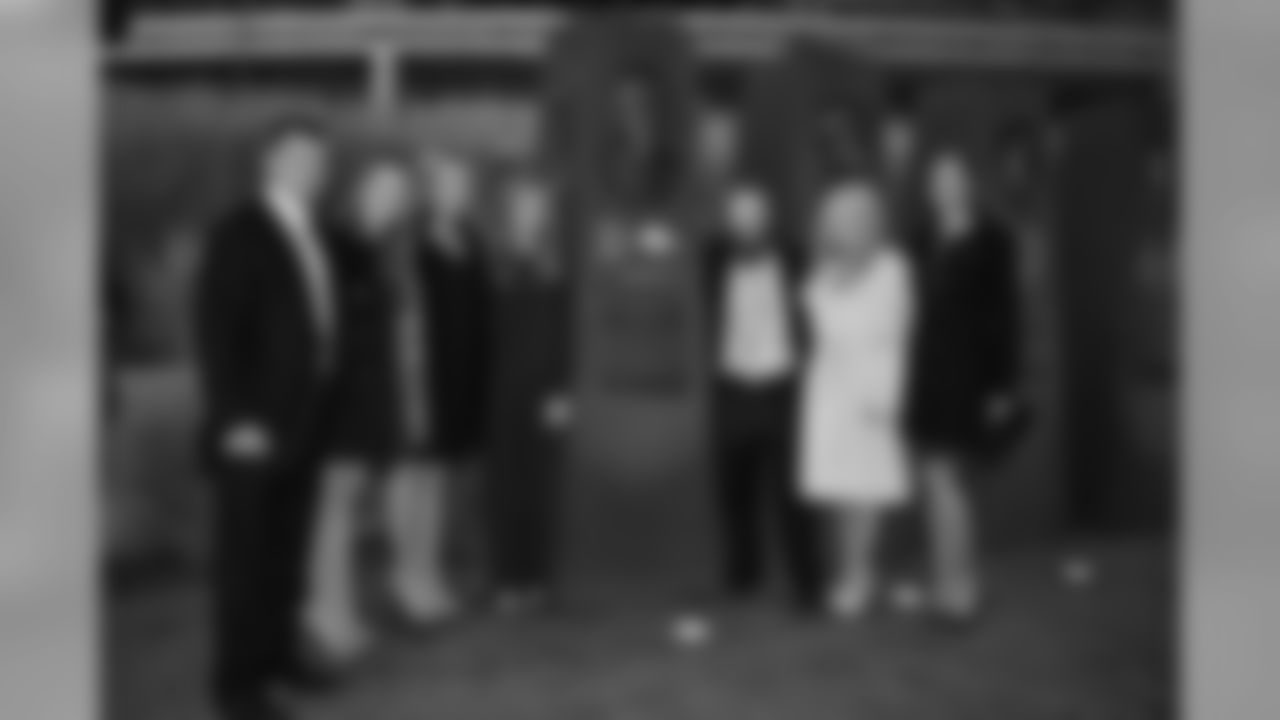
Bowlen family during the induction of Denver Broncos owner Pat Bowlen into the Ring of Fame October 30, 2015 at Sports Authority Field in Denver,CO. (Photo: © Eric Lars Bakke/ Denver Broncos)
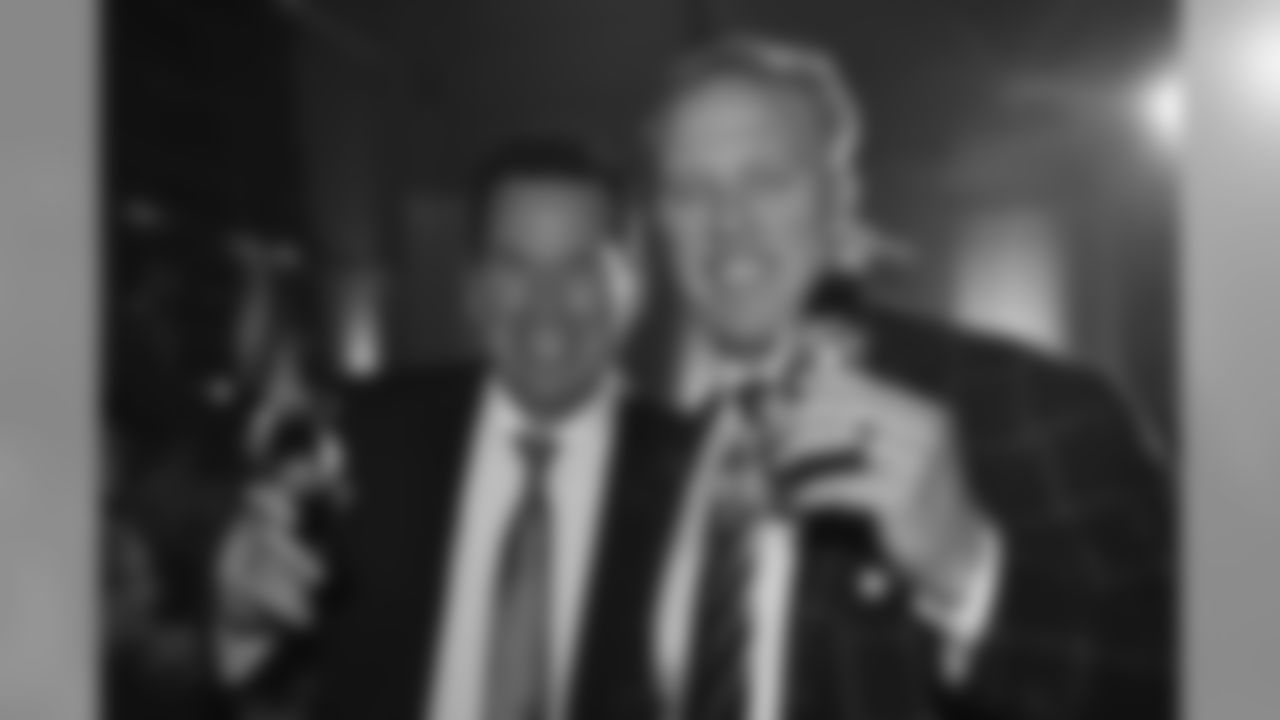
Denver Broncos Head Coach Gary Kubiak and Executive Vice President of Football Operations/ General Manager John Elway during the induction of Denver Broncos owner Pat Bowlen into the Ring of Fame October 30, 2015 at Sports Authority Field in Denver,CO. (Photo: © Eric Lars Bakke/ Denver Broncos)

Silhouetted statue of Denver Broncos owner and CEO Pat Bowlen before action against the Cincinnati Bengals in the NFL game at Sports Authority Field in Denver, CO, December 28, 2015. Photo by Ben Hays.
Establishing the Trust in the last decade is just one of Mr. Bowlen's numerous contributions to making the Broncos one of the league's elite organizations in the last three decades — and ensuring its viability and foundation for continued success in the future.
"He had a firm plan for keeping the team in the family, and it's his hope that it will remain there, and one of his children will come along and earn the right to sit in his chair," Ellis said in 2015. "He was unwavering in that, and he set out some guidelines and everything else as to what he'd like to see.
"But he planned ahead, and he had a very strict vision, if you will, as to what needed to happen."
It was Mr. Bowlen's final gift to an organization he guided with the utmost strength, vision and commitment beginning on March 23, 1984, when he was announced as the Broncos' new owner.
Mr. Bowlen's interest in professional sports ownership grew after his construction business was involved in the building of Northlands Coliseum in Edmonton, which would become the longtime home of the NHL's Edmonton Oilers after its opening in 1974. He loaned money to the then-owner of the CFL's Montreal Alouettes, and investigated buying that club, but declined.
Another potential ownership opportunity came in the form of the upstart United States Football League, which began its challenge to the NFL with a spring schedule in 1983. But Mr. Bowlen held out for an NFL opportunity, later telling the Montreal Gazette, "It [the USFL] is perhaps the worst investment you could ever make in professional sport."
Mr. Bowlen's perspective proved prescient, as it would time and again over the decades that would follow. In 1984, Mr. Bowlen and other family members paid $78 million for the Broncos. Last year, Forbes Magazine estimated the club's value at $2.7 billion.
Upon assuming the Broncos' reins, Mr. Bowlen did not make sweeping changes to the Broncos' organization, opting to observe and learn about the intricacies of his new business venture. Personnel executive John Beake, who had been with the organization since 1979, soon became the general manager, with Dan Reeves maintaining his position as head coach. Mr. Bowlen inherited a good thing, and set out to support his staff and players, allowing them to transform "good" into greatness.

"He didn't mandate anything," recalled Ellis, who worked on the business side of the organization. "He made it clear that he was coming in to learn and he was going to listen to Dan Reeves and John Beake on the football side. They were running the whole program at that time, and he deferred to them."
By taking a hands-off approach, Mr. Bowlen allowed his executives and coaches to function properly, and focused on taking care of his players, many of whom recall seeing him placing frozen turkeys in each player's locker prior to Thanksgiving.
"Everybody in the organization was treated like a human being," said Ring of Fame offensive lineman Gary Zimmerman, who was presented by Mr. Bowlen for induction into the Pro Football Hall of Fame in 2008. "It kind of felt like a family. I wanted to win ballgames for him. He took a chance on me. I was damaged goods. Nobody wanted me for a while. He took a chance with me."
Mr. Bowlen took care of his players. He didn't interfere, but he treated them as people, not as interchangeable parts.
"Pat's a special guy," Ring of Fame linebacker Karl Mecklenburg said in recent years. "He came in and bought the team from Edgar Kaiser. [For] Edgar Kaiser, it was an investment, right? 'I'm going to buy this team and I'm going to turn it over.' For Pat, it was a passion. He was there all the time. Any time you came in the weight room or the training room, [he'd be there]. He'd be on the sidelines. He'd be all over the place.
"Not only that, but he was involved with his players. He knew you. He knew what your position was on the team as far as leadership, as far as value to the team. He knew your family. I mean, I remember a story Tom Jackson used to tell me about Mr. [Gerald] Phipps. Mr. Phipps was the owner before Edgar Kaiser. Mr. Phipps would come in the locker room and pat you on the back and say, 'Have a good game,' and then he'd look at the back of your jersey so he could see your name and say, 'Have a good game — Jackson.' That's how most NFL owners are. Mr. Bowlen was unbelievable. Pat was so involved and wanted to be part of the game-day activity and everyday activity. He was a special guy that way."
When the free-agency era dawned in 1993, the Broncos capitalized on the new landscape for team-building, using free agency to supplement the team's draft-and-develop efforts. Ten of the Broncos' 22 starters in Super Bowl XXXII joined the team as unrestricted free agents.
One of the most important acquisitions was defensive end Neil Smith. Denver signed him following a stint with the archrival Kansas City Chiefs. Smith frequently wreaked havoc on the Broncos, averaging over one sack per game against them in the previous seven years. Mr. Bowlen had seen Smith's best, and he expected it to push the Broncos over the top – a point he made clear when they talked in Bowlen's office after Smith signed his contract.
"I'll tell you what solidified Mr. B, and I think he put a lot of pressure on me as an athlete, and he asked me in the beginning, 'Neil, do you know why you're here?' And I said, 'Yes, Mr. B. I know why I'm here. I'm here to win,'" Smith recalled in recent years. "He said, 'No, you're not here to win. You're here to win it all.'"
Ten months later, Smith, Mr. Bowlen and the Broncos did win it all, defeating Green Bay 31-24 to win Super Bowl XXXII. As Smith celebrated the accomplished mission, Mr. Bowlen's words echoed through his mind.
"They hand me the trophy, and I stand up with the trophy on a podium, and I'm standing up with it in the press-conference room, and one of Mr. B's guys came to me … and said, 'Mr. B said he would like the trophy now,'" Smith remembered. "I said, 'Give me one second. I will bring it to him.'
"And that moment right there solidified my whole career, because I didn't know if I was going to go any farther, whether I was going to be called back, but I brought this trophy to [him]. I said, 'Mr. B, do you know why I'm here? Here's why I'm here.'"

Smith was one of many Broncos who epitomized exactly what Mr. Bowlen wanted most: people who not only wanted to win, but were willing to sacrifice and do everything necessary to make it happen. Together, Mr. Bowlen and these players became more like family than co-workers.
"Mr. Bowlen was by far the best owner I ever worked for," said Brian Habib, a guard with the Broncos from 1993-97 who also played in Minnesota and Seattle.
"I think it was that feeling of almost like family," Habib said last year. "Mr. Bowlen was very hands-on there. He made you feel right at home when you got there. He would personally come and meet you. I remember meeting him when I first came on a visit when free agency happened in 1993. He came down and met me and we spoke for about five minutes, and he just welcomed you with open arms."
Mr. Bowlen desire to create connections beyond the norm between players and the organization didn't start with the team he inherited, but extended to the past, as creating the Ring of Fame was one of his first initiatives upon purchasing the Broncos.
Denver Broncos Charities — which has poured more than $30 million into local charitable efforts — Broncos Field at Mile High, Ring of Fame Plaza and even the cheerleading squad are just some of the countless contributions that tied to Mr. Bowlen's desire "be No. 1 in everything." This also involved creating the best possible fan experience for Broncos supporters, whose unwavering support makes the entire operation possible.
Mr. Bowlen's contributions to the league were legion, as well. He served on the league's labor, finance and stadium committees and was a key contributor to the NFL's Broadcast Committee, helping spur the creation of the NFL Network and NBC's Sunday Night Football package, which enters its 14th season in 2019 and has been the highest-rated program in U.S. broadcast television four times in the last eight years.
But first and foremost, Mr. Bowlen knew that the creating a winning on-field product was Job No. 1. Super Bowls are the standard for success, and on Jan. 25, 1998, the Broncos finally achieved that with their win over the Packers.
Mr. Bowlen knew that moment was not about himself, but the team. In perhaps the most memorable moment in the history of Super Bowl trophy presentations, he held aloft the Vince Lombardi Trophy and said, "This one's for John!" before handing the trophy to John Elway, who had started almost every game of Mr. Bowlen's stewardship to that point.
A year later, the Broncos repeated the feat, defeating the Atlanta Falcons 34-19 in Super Bowl XXXIII. Mr. Bowlen held the trophy aloft, turned to the fans in the stands at what was then known as Pro Player Stadium in Miami Gardens, Florida and proclaimed, "This one's for you!"

In both cases Mr. Bowlen was not thinking about himself or his legacy. He only considered the people who made it possible.
Years later, when Mr. Bowlen learned of his induction into the Ring of Fame, he smiled and replied, "Well, why would you guys do that?"
"That kind of sums up what Pat's all about: his modesty and his humility," said Ellis, who told Bowlen the news of his 2015 Ring of Fame induction. "I think Shannon Sharpe said it best when he said, 'Pat never wanted to take any of the credit; he wanted everybody else to get the credit.'"
Mr. Bowlen's day-to-day stewardship of the Broncos ended July 23, 2014, when he stepped away because of his struggle with Alzheimer's disease. His wife, Annabel, acknowledged that he had been struggling with the condition for "a few years," but he had maintained an active presence at team headquarters.
The final significant project approved under his watch was the massive redevelopment of the team facility, which was initially constructed in 1990, six years into his ownership. The signature addition to the complex — now known as UCHealth Training Center — was the indoor practice facility, constructed as part of a $38 million renovation of team headquarters. On Oct. 31, 2015, the facility was rechristened the Pat Bowlen Fieldhouse in his honor.
Mr. Bowlen's final game as President and CEO before he stepped away was Super Bowl XLVIII. Of course, that day did not end as the Broncos dreamed, with the chance to hold aloft the Vince Lombardi Trophy and proclaim, "This one's for Pat!" But the Broncos were back in the league's elite, and were only one step away from being back at the NFL's summit.
The Broncos took that step two years later, when they capped their franchise-record fourth consecutive season of 12 or more wins with their third world championship, sealed in a 24-10 win over the Carolina Panthers at Levi's Stadium in Santa Clara, California. After Annabel Bowlen accepted the Vince Lombardi Trophy, Elway spoke and proclaimed, "This one's for Pat!"
Those four words were etched on every Super Bowl ring given to players and staff to commemorate the Broncos' Super Bowl 50 win. That triumph was for Mr. Bowlen, who made the win possible.
The moves on which Mr. Bowlen signed off in the last decade — particularly hiring John Elway to run the team's football operations and approving a five-year contract for quarterback Peyton Manning — helped restore the Broncos to the place Mr. Bowlen always wanted them to be: in contention for championships.
"I think that's what he was about. That's what he wanted," Elway said in 2015. "To be able to get his team back on top is what we've all been working for. I think that's how Pat was built.
"The money was secondary and the resources — he was going to give everything he could to give us a chance to put the best football team on the field. To be able to do that, I think that he'd be more than thrilled."
"I think he was proud of that," Ellis said in 2015. "But that was also — and always will be — his expectation: that we're going to put the right people in place and we're going to turn it around, and if we make a mistake, then we're going to fix it again.
"He didn't consider it rocket science. He's had — and has always had — a good feel for when it's time to make these moves, and when the right time is. But he doesn't take much satisfaction [in it]. He's too modest to take personal satisfaction in having those situations corrected. He's more concerned with, 'Are we ready to win the Super Bowl each and every year?' I think that's his focus."
The Broncos' success has spanned players, coaches, administrations and generations. When it lasts for that long, it all comes back to Mr. Bowlen, the person atop the organizational chart. His legacy will forever linger with the franchise he owned, nurtured, cherished and guided to the pinnacle of its sport.














